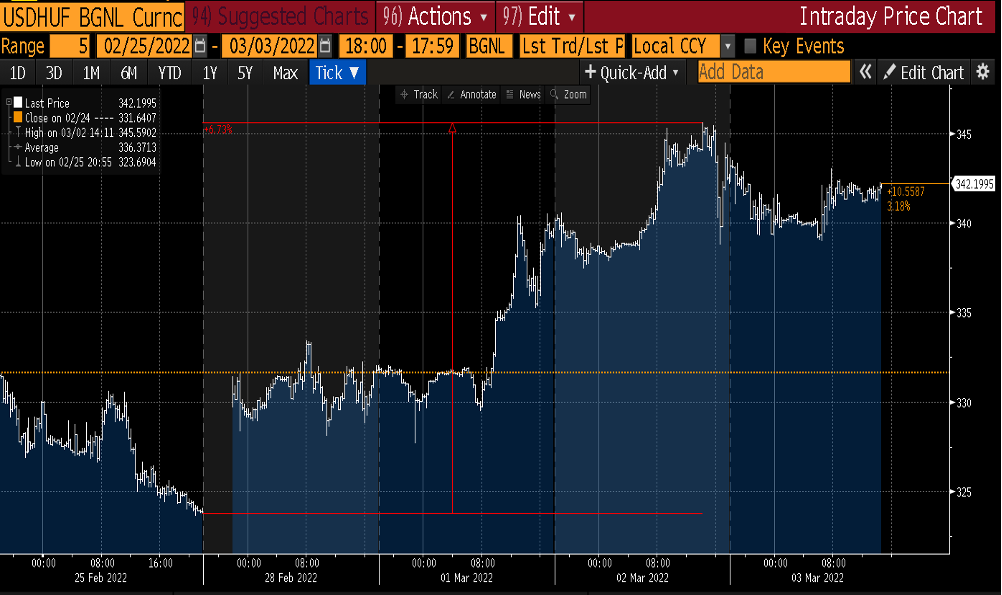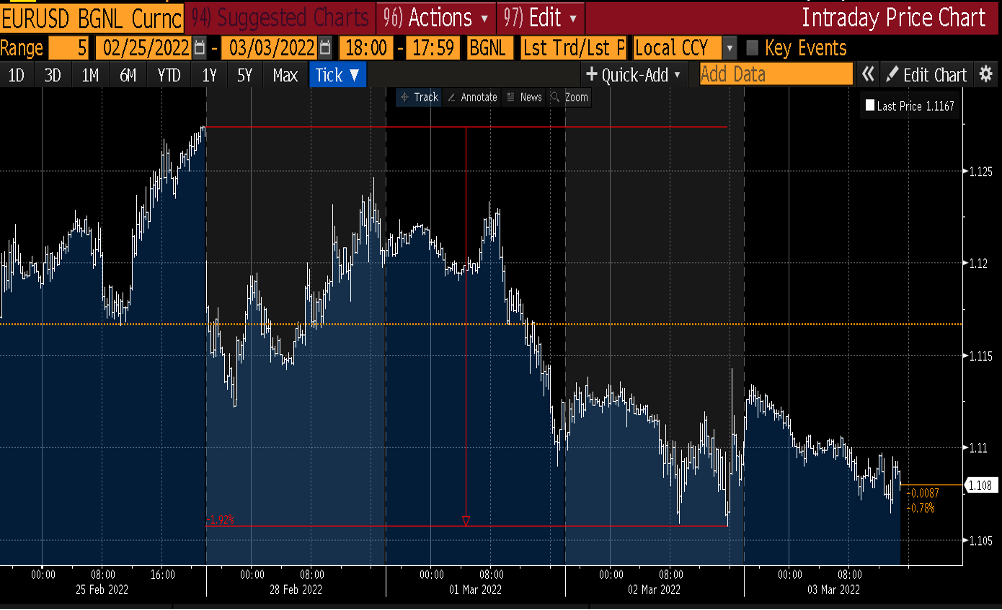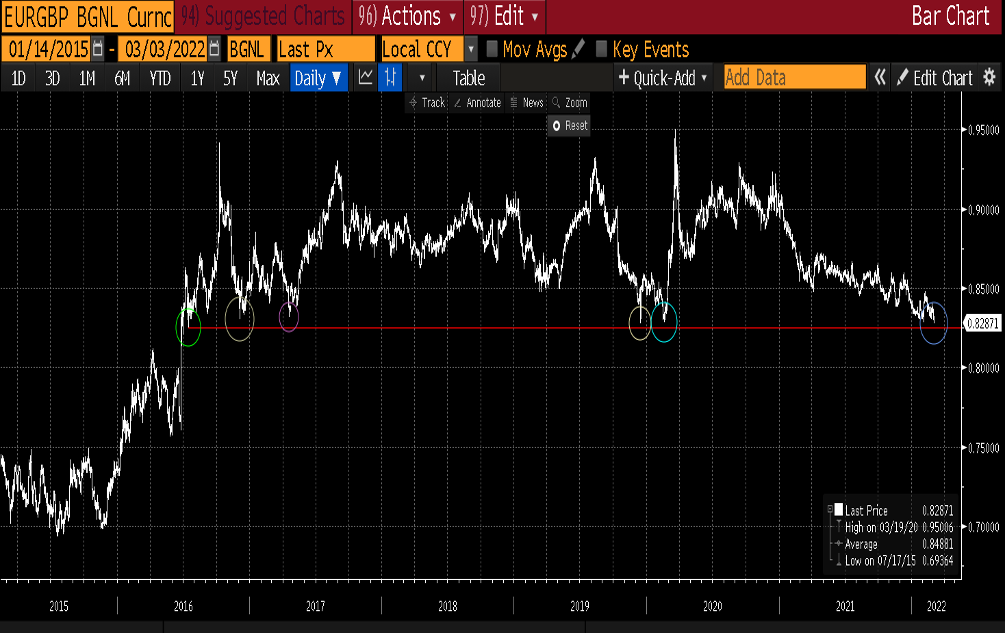The Impact of War
Currency Markets – The Impact of war
Global financial markets are feeling the violent impact of war – both Global bond markets and global equity markets have experienced high volatility this week, with commodities screaming higher, led by oil and on the back of supply chain issues. All of this brings growth concerns to the fore and of course, adds further fuel to the fire that rages under inflation across the globe.
We mentioned last week that currency markets were experiencing a lot of noise – with kneejerk moves in both directions as the market absorbed the headlines surrounding the developing Ukrainian invasion. This week we have seen the global currencies differentiate themselves – in general, commodity currencies and producers of energy have done well. Importers of energy have struggled, along with those geographically closest to the conflict. The likes of HUF, PLN and CZK and of course the Euro and Sterling – see the chart of USD/HUF below;
USD/HUF weekly chart – HUF has depreciated over 6% this week

The single currency (Euro) and Sterling have been heavily sold this week, predominately versus the Dollar and commodity currencies like AUD, CAD and NZD. GBP/USD sold off to a new yearly low of 1.3272 on Tuesday before recovering. Sterling remains vulnerable in this environment, not only from an energy stance but also due to the extent of Russian wealth entwined in the UK economy. Given how Eurocentric this situation is, it also makes sense that the market is selling EUR/USD – see weekly chart below
EUR/USD weekly chart –

With both Euro and Sterling being sold this week versus other currencies, the actual currency pair EUR/GBP has been relatively stable for the majority of the trading sessions this week. Over the past 12 hrs however we have seen Sterling gain the upper hand – remember Sterling does have a hawkish central bank in its corner – the Bank of England should hike interest rates by another 25 bps this month. EUR/GBP has pushed below the 0.8300 level and taking is nicely above the 1.2000 level in GBP/EUR terms – the high on the day has been 1.2084. A weekly close below 0.8300 in EUR/GBP would be very significant and should add further downward pressure on the currency pair. We have been here before though – see long term chart of EUR/GBP below – We have bounced off this zone many times post-Brexit from 2016 and until we significantly break 0.8250 – red line on the chart -EUR/GBP remains technically within its 6 yr range – albeit rubbing its belly along the bottom of that range…….

Disclaimer
The content of this report is for information purposes only. Nothing in this report should be considered financial, investment, legal, tax or other advice nor should it be interpreted as a recommendation to buy or sell foreign currency or any other products or services. Readers must carefully make their own decisions based upon their specific objectives and financial positions.
Treasury First is powered by Assure Hedge (UK) Limited, a company incorporated in England and Wales (No.10723112) with its registered office at 45 Eagle Street, London WC1R 4FS, UK, is authorised and regulated by the Financial Conduct Authority of the UK (FRN:783837). Assure Hedge Limited, the parent company, is incorporated in Ireland (No. 578153) with its registered office at Dogpatch Labs, CHQ Building, North Wall Quay, Dublin 1, Ireland.
